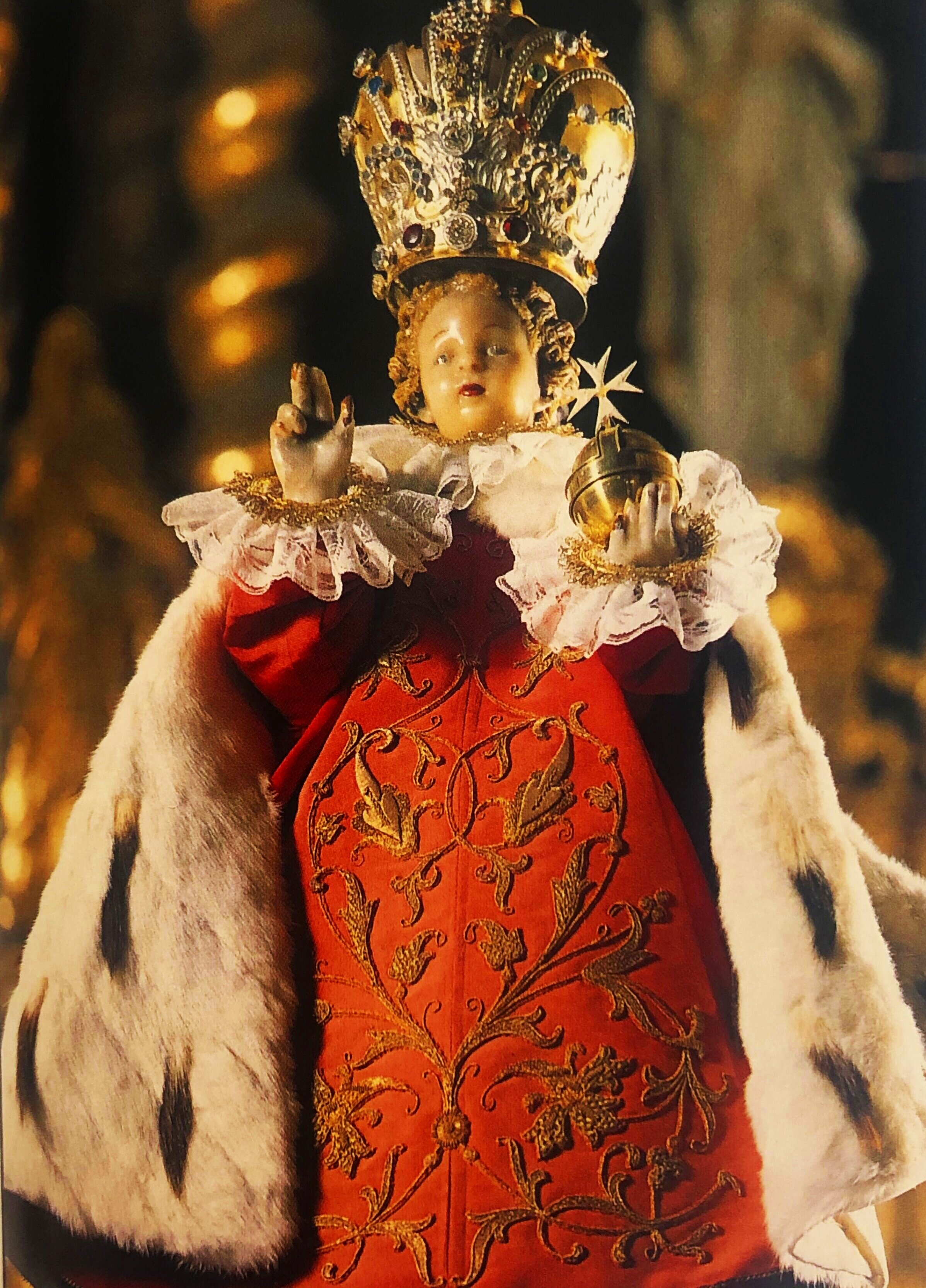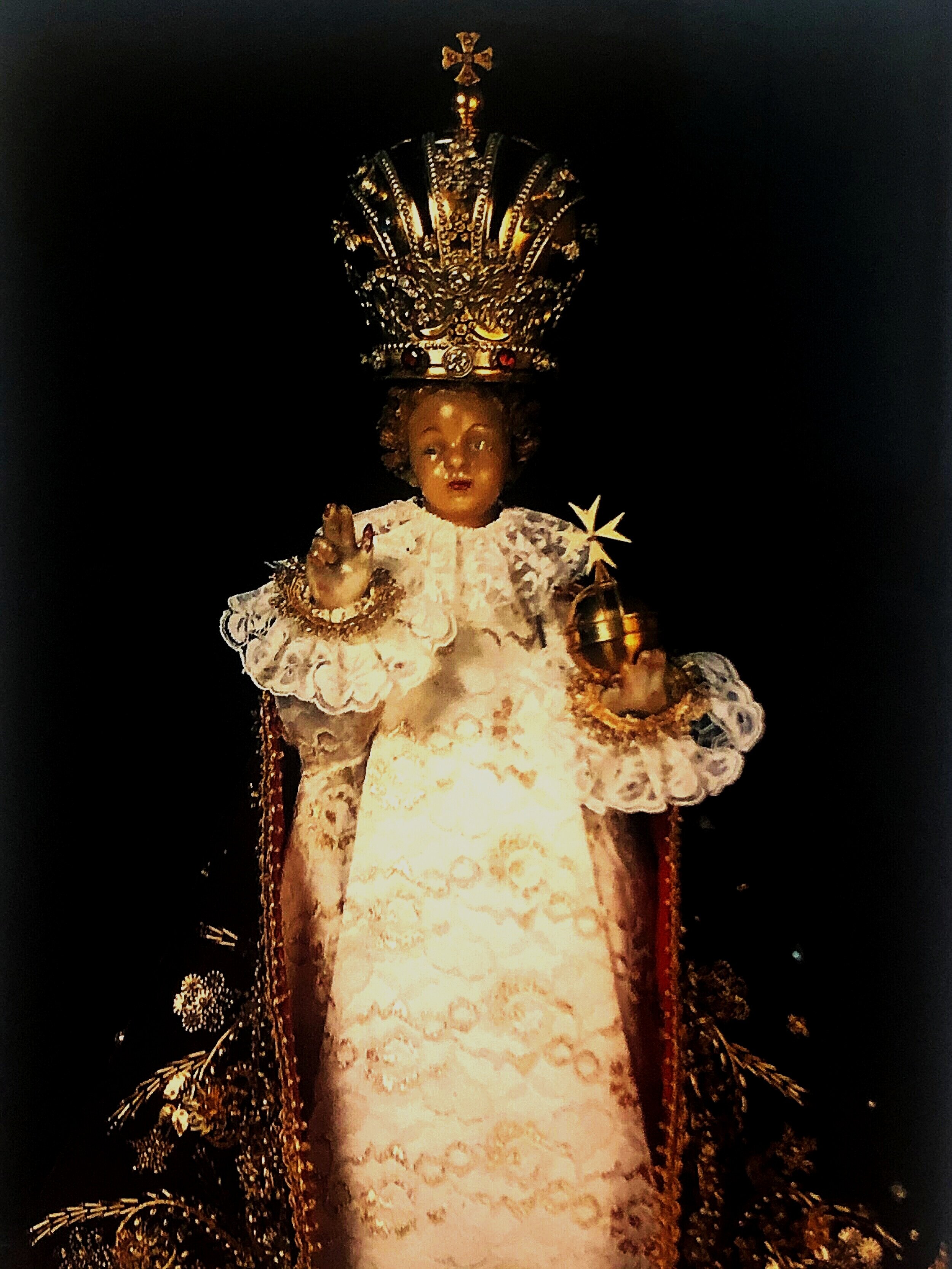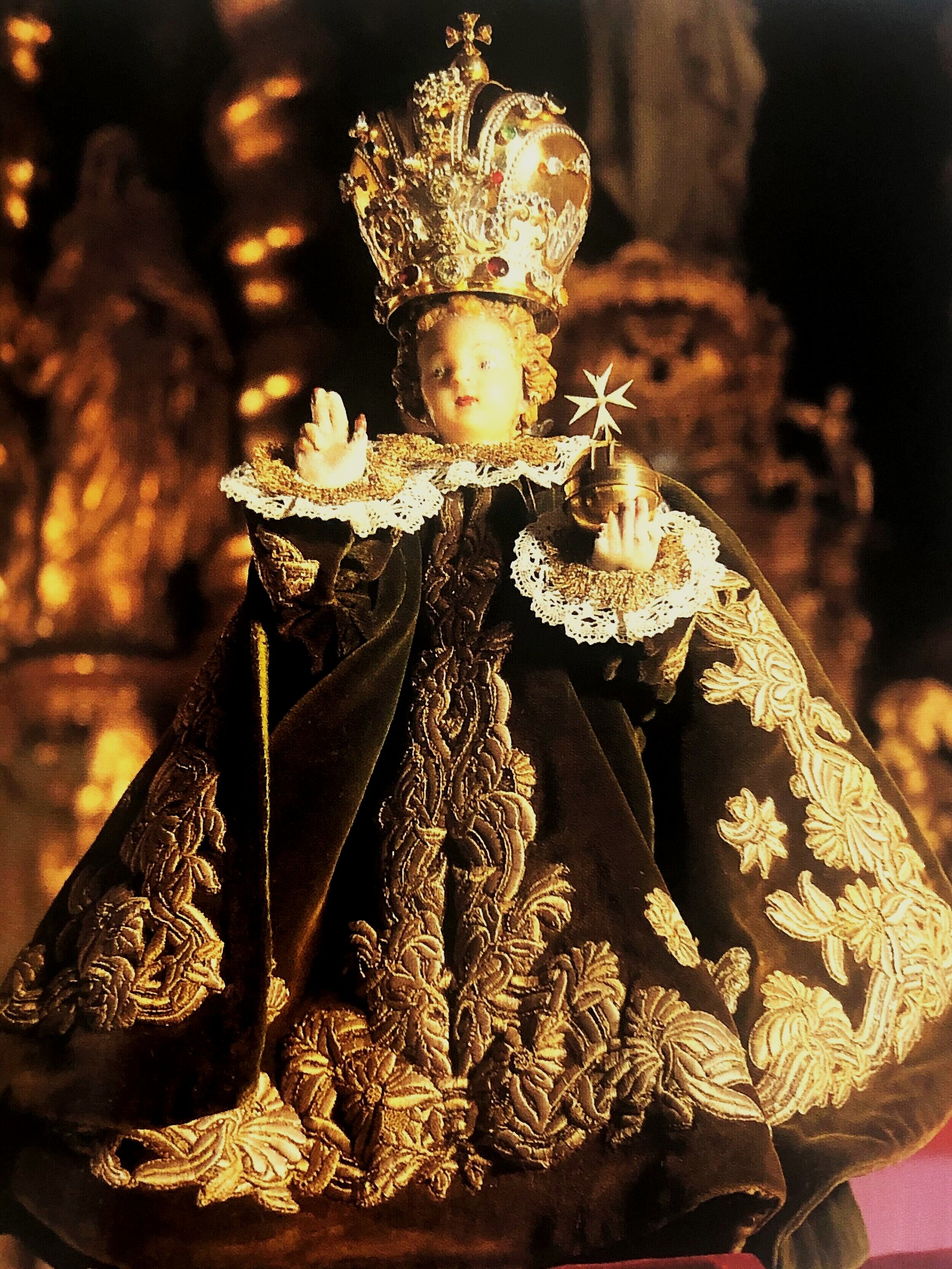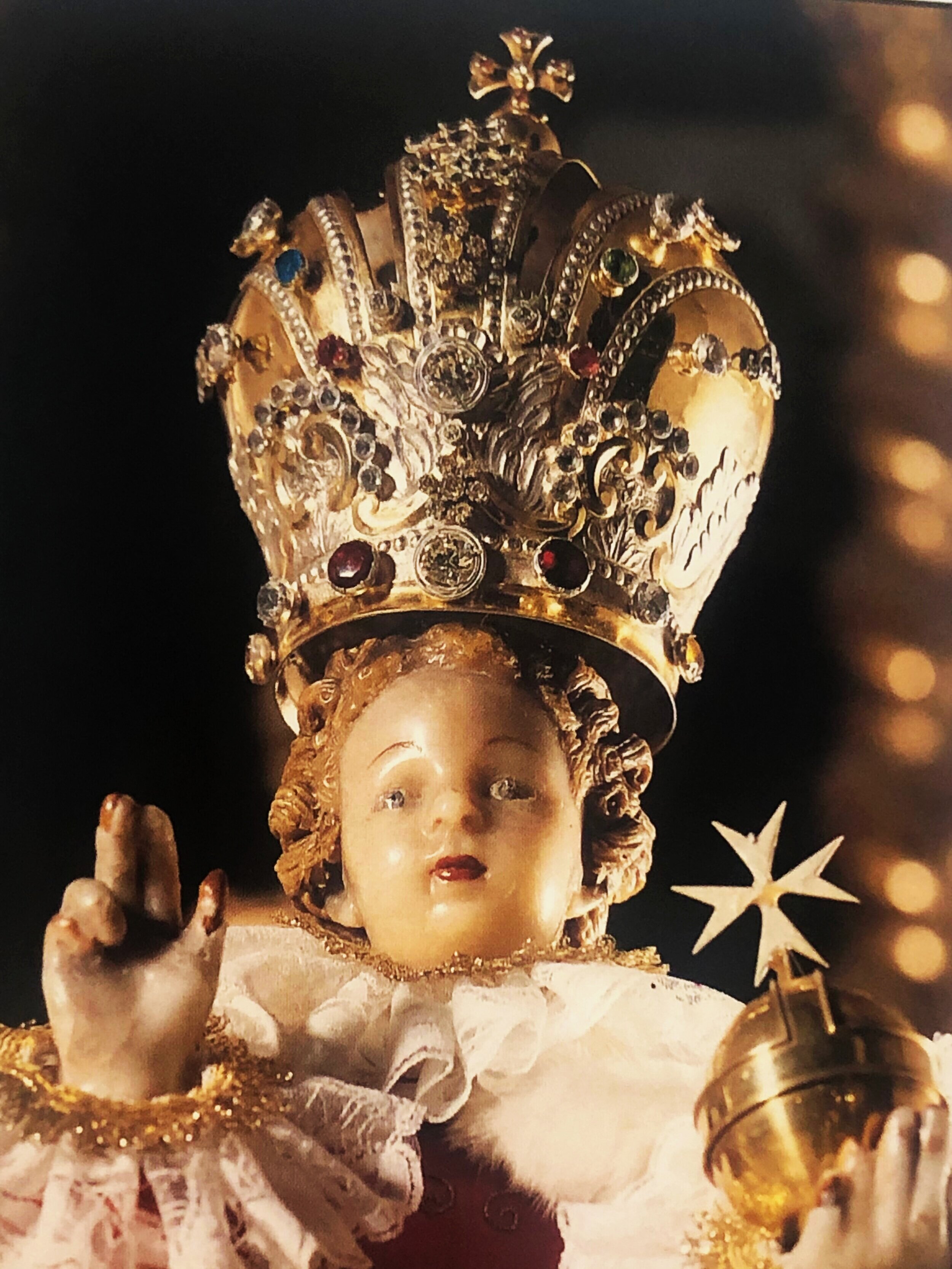Prague's Holy Infant Jesus' Fancy Fashion
Kostel Panny Marie Vítězné a Pražské Jezulátko
This Early Baroque building was built in 1611 by German Lutherans and dedicated to the Holy Trinity. The church was rebuilt 1634 - 1669 by the Carmelite order, famous for its statue of the Infant Jesus of Prague, originally from Spain, donated to the Carmelites by Polyxena of Lobkowicz in 1628.
A Roman Catholic wax-coated wooden statue of child Jesus holding globus cruciger in his left hand and the right hand raised in an upward posture. The Carmelite nuns routinely clothe the statue in luxurious fabrics with imperial regalia and a golden crown. The Infant Jesus has two crowns and about forty-six robes. His vestments are traditionally changed about ten times a year according to the ceremonial season. The statue placed in the oratory of the monastery of Our Lady of Victory, Prague, where special devotions to Jesus were offered before it twice a day. The Carmelite newcomers professed their vow of poverty in the presence of the Divine Infant. Religious legends claim that the statue once belonged to Saint Teresa of Ávila. Legend says that a monk in a desolated monastery somewhere between Cordoba and Sevilla had a vision of a little boy, telling him to pray. The monk had spent several hours praying, and then he made a figure of the child. The statue is venerated, with the faithful believing that Jesus has powers to give favors to those who pray to the Infant of Prague.
When the House of Habsburg began ruling the Kingdom of Bohemia in 1526, the kingdom developed close ties with Spain. The statue first appeared in 1556, when María Maximiliana Manriquez de Lara y Mendoza brought the image to Bohemia upon her marriage to Czech nobleman Vratislav of Pernstyn. An old legend in the Lobkowicz family reports that María's mother, Doña Isabella, had been given the statue by Saint Teresa of Ávila herself. María received the family heirloom as a wedding present. It later became the property of her daughter, Polyxena, 1st Princess Lobkowicz in 1628; Princess Polyxena von Lobkowicz donated the statue to the barefooted Carmelite friars. Upon presenting it, the pious Princess Polyxena of Lobkowicz said a prophetic statement,
"Venerable Fathers, I bring you my dearest possession. Honor this image, and you shall never want.”
Written By: J’on-Maree Greenidge








